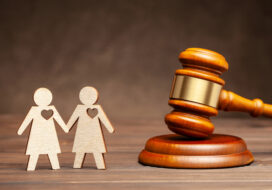by Toni Caretta
Discrimination against gays and lesbians is, at its most basic essence, gender based. We deviate from the binary hetero-normative expectation, by having same-gender partners and by having atypical gender expression. We too are transcending the gender norms.
Research published in The Archives of Sexual Behavior in February 2010 concluded that the assessment of one's sexual orientation by observation (aka "gaydar"), is based on deriving indirect cues about sexual orientation from information about sex atypicality. Specifically, sex atypical movement, speech and appearance, seem to be the aspects of one's behavior that are seen as "gay" – but are really about gender expression.
It is those among us who transgress the expression of gender that society expects of us, who are the most likely victims of bullying, hate crimes and suicide. Suicide as a result of gay bullying is a transgender hate crime. Murders of transgenders and suicides are only the most visible of the transgender hate crimes that each of us experience every day – but each of us experiences the negative impact of trans-gender hatred.
A Study by the National Center for Transgender Equality and the National Gay and Lesbian Task Force was recently published as The National Transgender Discrimination Survey Report on Health and Health Care. The study identifies both the magnitude and the nuances of suicide among transgender and gender non-conforming individuals.
According to the National Center for Health Statistics, 1.6 percent of currently living Americans have attempted suicide in the course of their lives. The NCTE/NGLTF study found that 41 percent of the transgender or gender non-conforming respondents had attempted suicide. Furthermore, analysis of the data showed certain attributes were correlated with an increased rate of attempted suicide. These included variables related to race, age and victimization.
Typically, African-Americans, Hispanics and Asians have significantly lower suicide rates than whites and Native Americans. In the NCTE/NGLTF study, Native Americans, African-Americans and Hispanics had the higher incidence of suicide attempts.
In the general population there is a higher incidence of suicide attempts among older Americans compared to youth. In the NCTE/NGLTF study the highest rates of suicide attempts were reported among those between the ages of 18 and 44 (45 percent), with only 16 percent of those over 65 reporting a suicide attempt.
Sadly, the NCTE/NGLTF study found that 51 percent of those who had been bullied, harassed, assaulted or expelled from school because they were transgender or gender non-conforming, had made suicide attempts.
Research by Caitlyn Ryan at the Family Acceptance Project found that LGBT youth subjected to higher levels of family rejection during adolescence, were not only 8.4 times more likely to report having attempted suicide, but also 5.9 times more likely to report high levels of depression, 3.4 times more likely to use illegal drugs and 3.4 times more likely to report having engaged in unprotected sexual intercourse compared with peers who experienced no or low levels of family rejection.
Though murder and suicide are dramatic types of death, the fact is that many more individuals in marginalized groups experience the slow silent death of hatred which leads to increased stress and decreased access to services. The NCTE/NGLTF study found a connection between multiple incidences of discrimination, harassment and abuse, and a high risk for poor health outcomes including, not only suicide attempts, addictions and increased risk for HIV infection, but also restricted access to care.
There is plenty of research documenting that the rates of death from cardiovascular disease, cancer, stroke and many other health problems are consistently higher among women and other minority groups. Though there is no data on the rates of chronic and fatal health conditions specifically among the LGBT population, given the data we do have on other aspects of physical and mental health, the conclusion is that we are hated to death, literally.
Transgender Day of Remembrance is not just about the murder of "those" transgenders. It's about the transgender hatred we as LGBT experience every day which leads us to a host of negative health outcomes that aren't as sudden or as dramatic as murder or suicide. On Nov. 20 and everyday, I urge you to fight for transgender rights – as if you're life depended on it.









